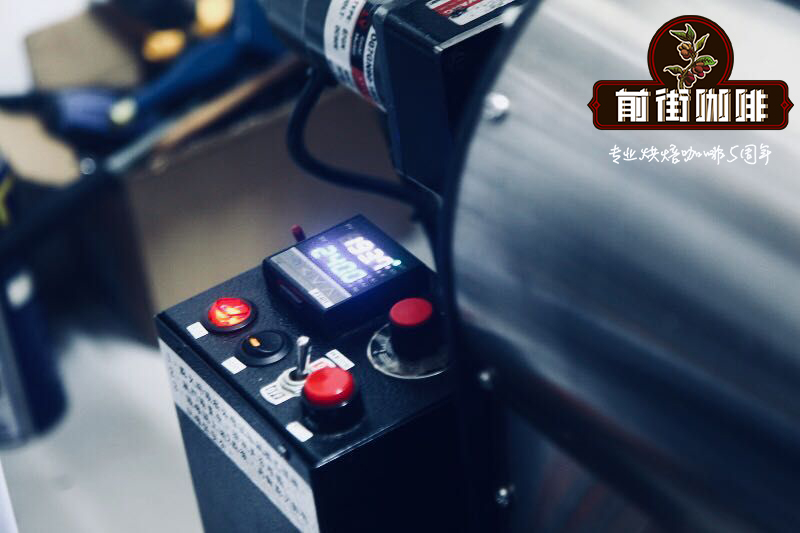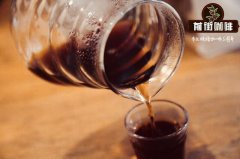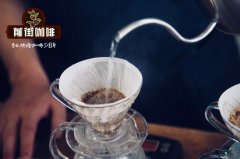Panamanian jade manor red standard rose summer boutique coffee is fermented and wet fermented?

Professional coffee knowledge exchange more coffee bean information please follow the coffee workshop (Wechat official account cafe_style)
The basic process of coffee is coffee planting-> raw bean treatment-> cooked bean roasting-> coffee brewing. However, in this process of raw bean treatment, all kinds of treatment methods are inextricably related to fermentation.
Most of the methods we see are dry fermentation (dry fermentation) and wet fermentation (wet fermentation), and how are the more popular 'anaerobic treatment' and 'yeast treatment' carried out recently?
Yeast treatment
No matter from which point of view, adding yeast to the fermentation process is a bold approach.
Camille Delebeque, a French doctor of biology, gave a speech at Re;co in Gothenburg, Sweden. the company he founded changed the flavor of coffee by controlling the microbes in the process of coffee fermentation, making the coffee less bitter, astringent, and sometimes even sour. He called the product Cultured coffee, or microbial coffee.
Their approach is to select specific yeasts or microbes for so-called secondary fermentation, to improve the good flavor, or to reduce the bad flavor. Even if he did not disclose what microbes he used, nor did he explain how his secondary fermentation was carried out, let alone the origin of coffee, beans, etc., his product was not cheap at all, asking $29 for 5 ounces (148g).
Aida Batlle, El Salvador's best-known coffee farmer, partnered with Equator, an American bean baker, to add yeast to the fermentation tank of Buenos Aires on the Salvadoran farm to test the effect on the flavor and compare it with the traditional washing treatment without yeast. In 2017, they experimented with two different yeasts and found that different yeasts produced different results. One of them increases the sweetness, balance and consistency of coffee, while the other improves brightness and fruit tonality. Yeast treatment adds flavors that are not easily available in traditional washing: sugarcane, lemon, nutmeg and sage.
According to official information, the Panamanian Jade Manor Rose Summer auction yeast processing Series (ES-Y): a total of four LOT batches, nine boxes of beans, using a new treatment method "yeast fermentation" and unique flavor of Rosa.
One of the biggest highlights of this year's auction is the addition of "yeast treatment batches": adding special yeast to the fermentation tank for 48 hours before washing, and then drying on the drying bed for four days. Unique yeast treatment batches. The addition of yeast in the post-processing process makes the fermentation process more rapid and thorough, and produces a special flavor.
According to the different flavor of red wine of yeast, the red wine taste of yeast An is more obvious than that of yeast B, while the red wine of yeast An is more meticulous, which can show the characteristics of Rosa more beautiful, so the price of Ymur1 is higher.
Lot ES-Y-1: add A yeast to ferment for 48 hours, then wash it, then dry it on the scaffolding for 4 days, the bidding price is US $340 / lb!
Lot ES-Y-2: add B yeast to ferment for 48 hours, then wash it, then dry it on the scaffolding for 4 days, the bidding price is US $111l / lb!
According to the manor operator Rachel Peterson, the "yeast fermentation method" is an attempt at the treatment of the Jade Manor to observe the performance of Rosa coffee fermented by yeast inoculation.
Treatment process: manually pick the fully ripe bright red fruit, sift out the small size and rinse, soak in clean water, ferment for about 48 hours, add yeast, and then dry in the sun. Lay flat on the tanning bed about 1 murmur2 layers thick, after 4 days of sun exposure, the average temperature: daily: 16 degrees-23 degrees, every night: 10 degrees-15 degrees, complete a completely different unique flavor!
After testing the red mark with yeast in our cup, we are pleased to find that this method enhances the performance of Rose Summer Coffee in all aspects (including aroma, mellow thickness, acidity and finish) and is very different from Sun Rose Summer. In general, it is closer to anaerobic fermentation, this treatment of rose summer is very good in terms of aroma and flavor, it grinds away the unsoftness and high acidity of washed coffee, brings a balanced and rich layer, and adds a flavor similar to red wine.
For more professional coffee exchanges, please scan the code and follow Wechat: FrontStreetCoffee
Important Notice :
前街咖啡 FrontStreet Coffee has moved to new addredd:
FrontStreet Coffee Address: 315,Donghua East Road,GuangZhou
Tel:020 38364473
- Prev

Panamanian Jade Manor Red Standard Rose Summer Fine Coffee yeast treatment is what kind of treatment?
Professional coffee knowledge exchange more coffee bean information Please pay attention to coffee workshop (Wechat official account cafe_style) fermentation this word in life is often reminiscent of noodle making cakes, Youtiao, steamed buns, steamed buns, or food spoilage items mildew. Fermentation has been used so much in our daily life that it is so common that we enjoy the variety.
- Next

Characteristics of Mocha Matari Sun Mocha Coffee in Yemen
For more information on coffee beans, please follow the coffee workshop (official Wechat account cafe_style). Yemeni coffee is immediately reminiscent of the magical sun-dried beans that taste thick and full, and the fantasy wild aroma of fermented tea in its aftertaste is stacked, full of mystery and elusiveness and infinite longing like the country of Yemen. Yemen is located in Asia across the Red Sea and East Africa.
Related
- Detailed explanation of Jadeite planting Land in Panamanian Jadeite Manor introduction to the grading system of Jadeite competitive bidding, Red bid, Green bid and Rose Summer
- Story of Coffee planting in Brenka region of Costa Rica Stonehenge Manor anaerobic heavy honey treatment of flavor mouth
- What's on the barrel of Blue Mountain Coffee beans?
- Can American coffee also pull flowers? How to use hot American style to pull out a good-looking pattern?
- Can you make a cold extract with coffee beans? What is the right proportion for cold-extracted coffee formula?
- Indonesian PWN Gold Mandrine Coffee Origin Features Flavor How to Chong? Mandolin coffee is American.
- A brief introduction to the flavor characteristics of Brazilian yellow bourbon coffee beans
- What is the effect of different water quality on the flavor of cold-extracted coffee? What kind of water is best for brewing coffee?
- Why do you think of Rose Summer whenever you mention Panamanian coffee?
- Introduction to the characteristics of authentic blue mountain coffee bean producing areas? What is the CIB Coffee Authority in Jamaica?

